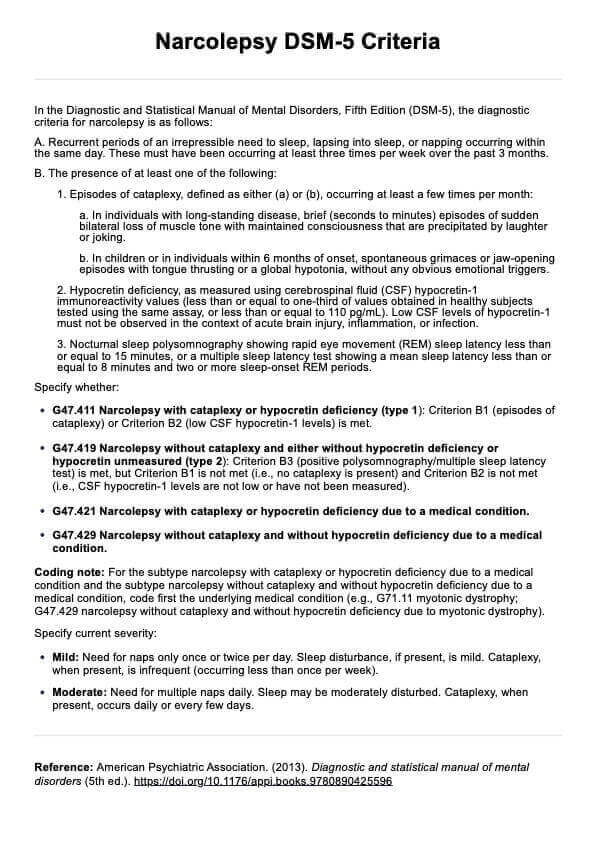Yes, narcolepsy is recognized as a Diagnostic and Statistical Manual of Mental Disorders (DSM-5) diagnosis under the category of sleep-wake disorders.

DSM-5 Narcolepsy Criteria
Learn about narcolepsy and its types. Download a free DSM-5 Narcolepsy Criteria handout for your practice here.
DSM-5 Narcolepsy Criteria Template
Commonly asked questions
Narcolepsy consists of four classic symptoms, although not all patients experience all four: excessive daytime sleepiness (EDS), cataplexy, sleep paralysis, and hypnagogic hallucinations. Patients with narcolepsy frequently experience disturbed nocturnal sleep, meaning their nighttime sleep is often fragmented and interrupted by multiple awakenings.
Yes, narcolepsy can co-exist with other sleep-related conditions, such as obstructive sleep apnea (OSA), restless legs syndrome (RLS), and periodic limb movement disorder (PLMD). It can also be comorbid with psychiatric disorders, such as depression or anxiety.
EHR and practice management software
Get started for free
*No credit card required
Free
$0/usd
Unlimited clients
Telehealth
1GB of storage
Client portal text
Automated billing and online payments











